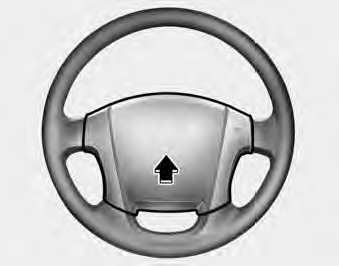 Kia Sportage: Steering wheel
Kia Sportage: Steering wheel
Power steering Power Steering uses energy from the engine to assist you in steering the vehicle. If the engine is off or if the power steering system becomes inoperative, the vehicle may still be steered, but it will require increased steering effort. Should you notice any change in the effort required to steer during normal vehicle operation, have the power steering checked by an Authorized Kia Dealer.
NOTICE • Never hold the steering wheel against a stop (extreme right or left turn) for more than 5 seconds with the engine running. Holding the steering wheel for more than 5 seconds in either position may cause damage to the power steering pump. • If the power steering drive belt breaks or if the power steering pump malfunctions, the steering effort will greatly increase.
NOTICE If the vehicle is parked for extended periods outside in cold weather (below -10°C/14°F), the power steering may require increased effort when the engine is first started. This is caused by increased fluid viscosity due to the cold weather and does not indicate a malfunction. When this happens, increase the engine RPM by depressing accelerator until the RPM reaches 1,500 rpm then release or let the engine idle for two or three minutes to warm up the fluid. Tilt steering (if equipped) A tilt steering wheel allows you to adjust the steering wheel before you drive.You can also raise it to the highest level to give your legs more room when you exit and enter the vehicle. The steering wheel should be positioned so that it is comfortable for you to drive, while permitting you to see the instrument panel warning lights and gauges.
WARNING - Steering wheel • Never adjust the angle of steering wheel while driving. You may lose your steering control and cause severe personal injury or accidents. • After adjusting, push the steering wheel both up and down to be certain it is locked in position.

To change the steering wheel angle, pull down (➀) the lock release lever, adjust the steering wheel to the desired angle (➁), then pull up the lock-release lever to lock the steering wheel in place. Be sure to adjust the steering wheel to the desired position before driving.

Horn To sound the horn, press the horn symbol on your steering wheel. Check the horn regularly to be sure it operates properly.
CAUTION - Horn • To sound the horn, press the area indicated by the horn symbol on your steering wheel (see illustration). The horn will operate only when this area is pressed. • Do not strike the horn severely to operate it, or hit it with your fist. Do not press on the horn with a sharp-pointed object.
 Brake system
Brake system
Power brakes Your vehicle has power-assisted brakes that adjust automatically
through normal usage. In the event that the power-assisted brakes lose power because
of a stalled engine or some other ...
 Cruise control system
Cruise control system
The cruise control system allows you to program the vehicle to maintain a constant
speed without resting your foot on the accelerator pedal. With cruise control, you
can set and automatically main ...
See also:
Radio FM
To switch to the FM band, say “FM” or “Radio FM”. In
this mode, you may say the following commands:
• “Frequency #” (to change the frequency)
• “Next Station” (to select the ...
Continuously Variable Transmission (CVT)
All-Wheel Drive (AWD) models:
Do not tow an AWD vehicle with any of the
wheels on the ground.
Two-Wheel Drive (2WD) models:
To tow a vehicle equipped with a Continuously
Variable Transmission ( ...
Measurement of weights
Secure loose items to prevent weight shifts
that could affect the balance of your
vehicle. When the vehicle is loaded, drive
to a scale and weigh the front and the rear
wheels separately to de ...
